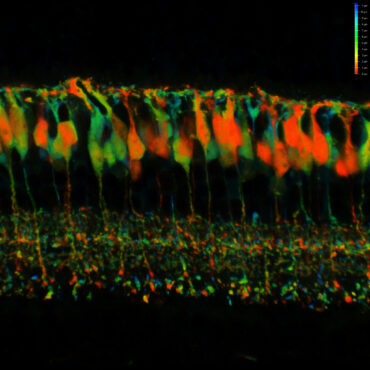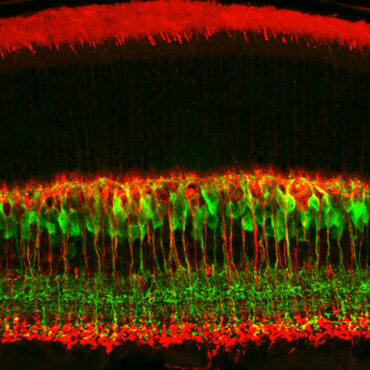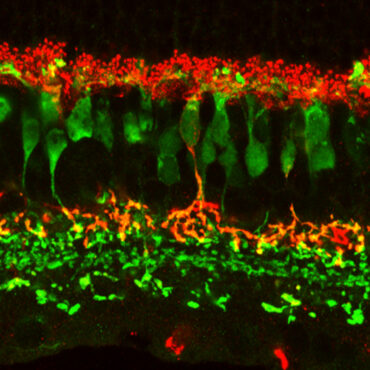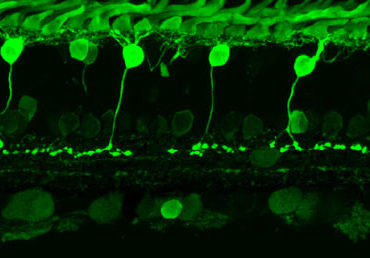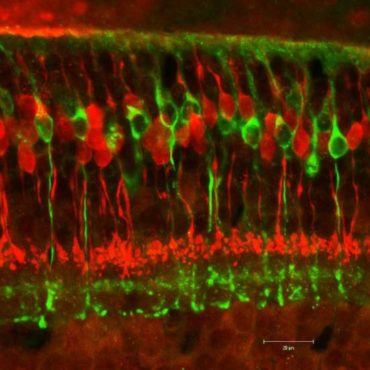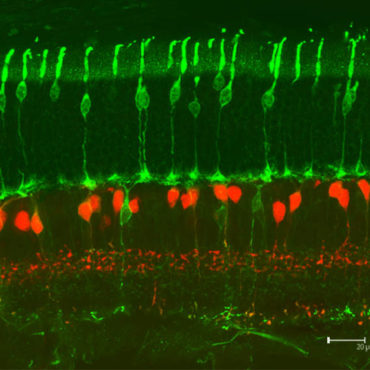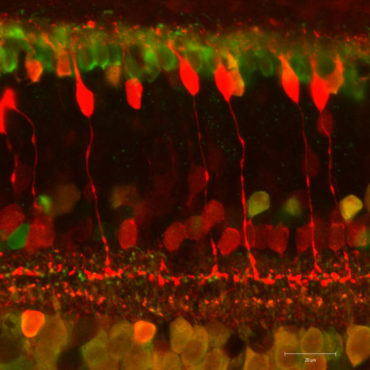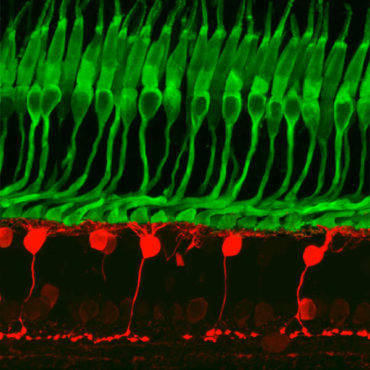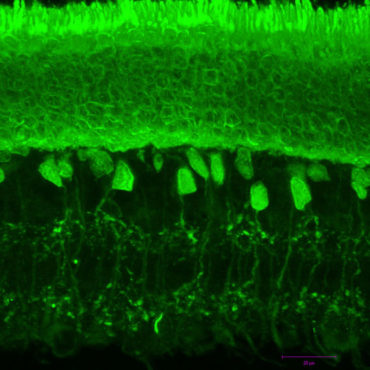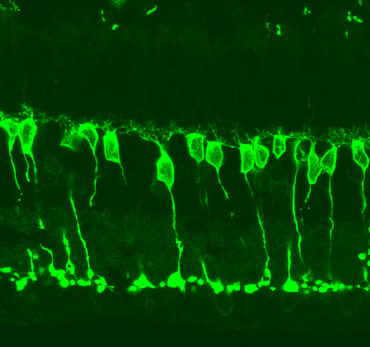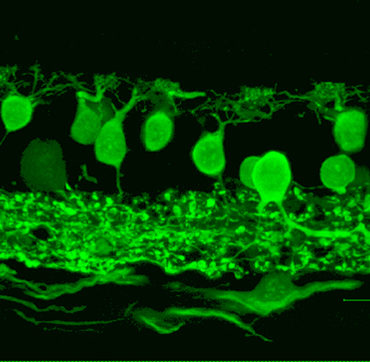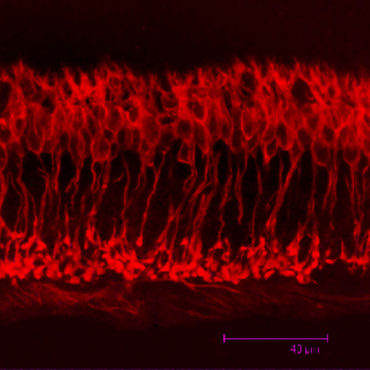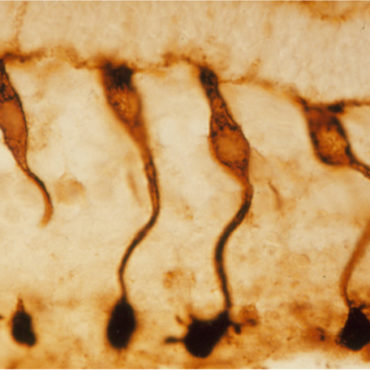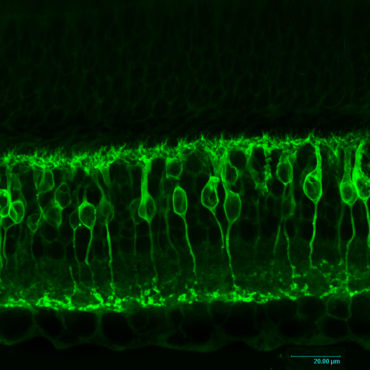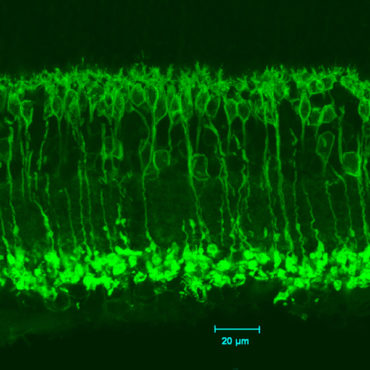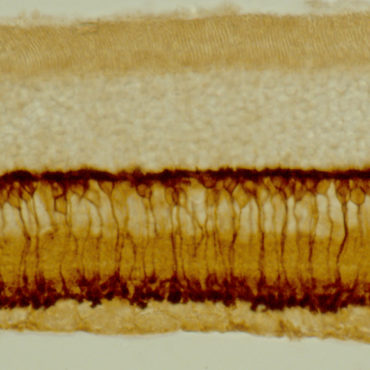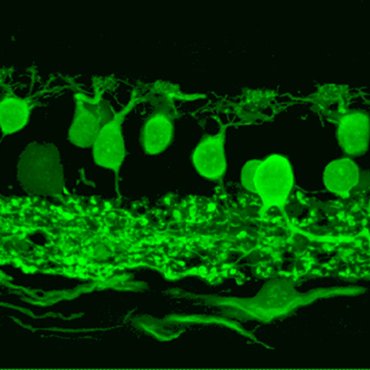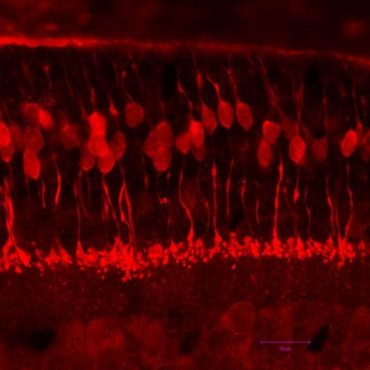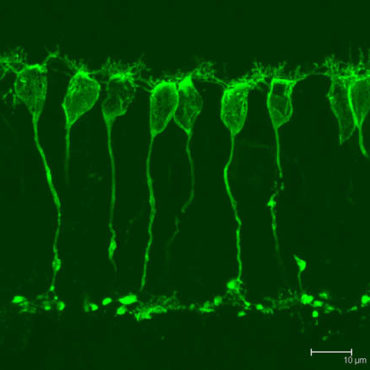Bipolar cells
Bipolar cells are a type of neuron located in the inner nuclear layer and transfer information from the outer plexiform cells to the inner retina. They have a central body from which two sets of processes arise. The dendrites that receive information from the photoreceptors and horizontal cells and pass it on to the ganglion and amacrine cells through their axon. Bipolar cells make synapses from either rods or cones, and they are designated rod bipolar or cone bipolar cells respectively. There are ten distinct types of cone bipolar cells in mammalian retina, and only one type of rod bipolar cell. Based on how they react to glutamate released by photoreceptor bipolar cells can be classified into two different groups, ON and OFF, cells, either through a metabotropic (ON) or ionotropic (OFF) receptor. When light hits a photoreceptor cell, the photoreceptor hyperpolarizes, and releases less glutamate. ON bipolar cells will respond to this change by depolarizing and OFF bipolar cells will respond by hyperpolarizing.
